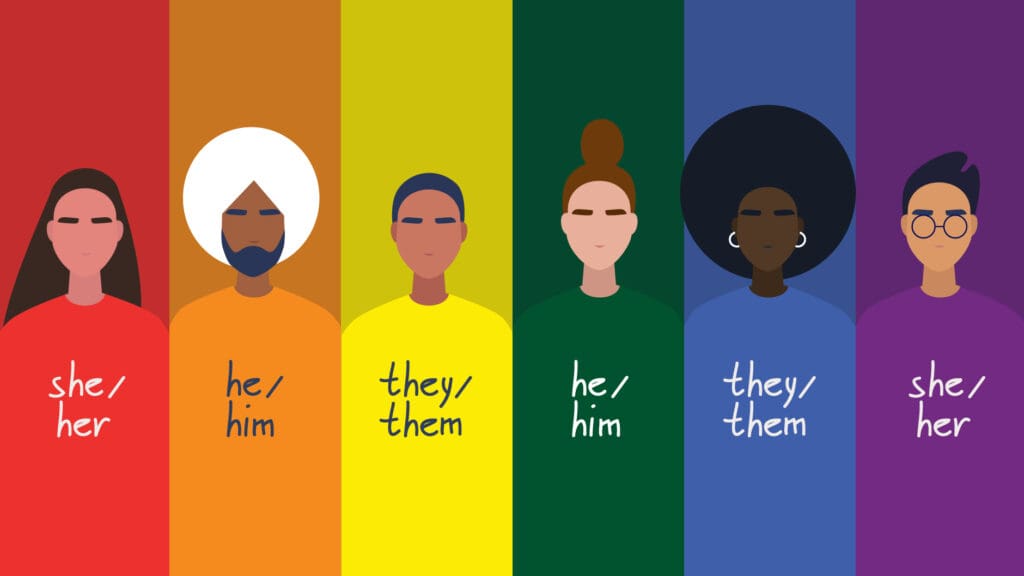
To read this blog in Spanish, click here.
by Susan Le
When we think about walkability, we often focus on physical surroundings – the streets, public spaces, and amenities that make walking and rolling safe and accessible. However, for those who feel exposed or unsafe due to intolerance, harassment, or threats of violence, walkability is denied. In this blog series (read our introduction here) we explore the ways social, cultural, economic, and political factors affect the right of all people to move freely and safely in their communities.
Mobility justice is a framework that examines and seeks to address historical and ongoing transportation and infrastructure inequities that disproportionately affect marginalized communities. We support a vision for a world rooted in social justice where people feel safe existing on the streets and can build lives experiencing the full joy of movement and community regardless of their identities. We believe this is essential to promote the health, well-being, and success of our communities.
Think of the times you have ever felt uncomfortable or unsafe while walking alone. Imagine the impact if those feelings of fear and vulnerability were a constant presence in your daily life. Imagine being subjected to unwelcome comments, catcalls, or gestures every time you step out of your house because of your gender expression. That’s the reality for many girls, women, non-binary, and intersex people who experience street harassment as 65 percent of all women have experienced street harassment. Among all women, 23 percent have been sexually touched, 20 percent have been followed, and 9 percent have been forced to do something sexual. The objectification and invasion of personal space can make one feel anxious, self-conscious, humiliated, and fearful. It chips away at a person’s self-esteem and creates a hostile environment where they can’t fully enjoy their surroundings.
Gender-based street harassment undermines these values by creating an environment where individuals, particularly women and gender-diverse people, feel unsafe and disrespected in public spaces. Let’s explore some of the key connections between gender-based violence and mobility justice:
Access to Safe Spaces: Gender-based violence often restricts the mobility of women and gender-diverse individuals. Fear of violence in public spaces, including streets, public transportation, and recreational areas, can limit their ability to move freely and participate in public life. Mobility justice advocates for creating safe and inclusive spaces that allow everyone, regardless of gender, to navigate their environments without the fear of harm or harassment.
Transportation Inequities: In many communities, access to safe and reliable transportation is a gendered issue. Women, nonbinary people, and intersex people may face specific challenges in accessing transportation due to limited routes, inadequate lighting, or concerns about safety during late hours. Addressing these transportation inequities is essential for promoting mobility justice and ensuring that all individuals have equal access to essential services, education, and economic opportunities.
Harassment and Assault in Public Spaces: Gender-based violence, such as street harassment and sexual assault, can occur during daily commutes or travel. This deters women and women-presenting individuals from using public transportation or moving freely in public spaces. Mobility justice seeks to address these issues by promoting safe transportation options and implementing policies that protect vulnerable populations from violence and harassment.
Urban Planning and Safety: Mobility justice emphasizes the importance of considering diverse perspectives and needs in urban planning. Women and gender-diverse individuals may have different mobility patterns and requirements, which should be taken into account when designing public spaces and transportation systems. Creating walkable neighborhoods, well-lit streets, and easily accessible public transit can enhance safety and encourage equal participation in public life.
Displacement and Vulnerability: During times of displacement due to natural disasters, conflict, or economic reasons, women and gender-diverse individuals may face heightened vulnerability to gender-based violence. Mobility justice advocates for the protection and support of these populations during such crises, ensuring that their mobility is not further restricted and that they have access to safe shelter and resources.
Barriers to Reporting and Seeking Help: Gender-based violence can discourage survivors from reporting incidents or seeking help. Limited access to transportation and safe spaces can make it challenging for survivors to escape harmful situations or access support services. Mobility justice seeks to remove barriers to reporting and help-seeking by ensuring that resources and support are easily accessible to all individuals.
To address gender-based violence, it is essential to understand gender mainstreaming. Gender mainstreaming is a concept and strategy aimed at integrating a gender perspective into all stages and aspects of policy-making, programming, and decision-making processes. It recognizes that gender inequalities exist and seeks to address them by systematically considering the different experiences, needs, and priorities of women, men, and gender-diverse individuals. The objective is to achieve gender equality by ensuring that gender perspectives are integrated into all policies and practices rather than treating gender as a separate issue.
We recognize that we are not leaders in this movement, but we all have a role to play in ending gender-based violence. Our central job of creating safe streets and places for all people remains. We will continue to build meaningful relationships with marginalized communities and stand in solidarity with active engagement. We can build and strengthen walkable and accessible communities by educating ourselves about the issue, speaking out against harassment, and supporting organizations working towards safer public spaces. We can contribute to creating a society where everyone feels safe and respected.
Additional Resources
For those seeking resources and information on gender-based violence, the following organizations, along with many others, are dedicated to putting an end to gender-based violence and street harassment, while advocating for a more inclusive and equitable society. Follow their work which provides access to resources and opportunities to stay informed:
Read the previous installment of this series here.